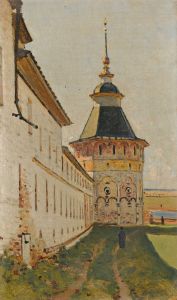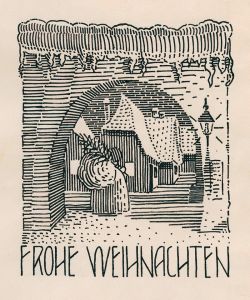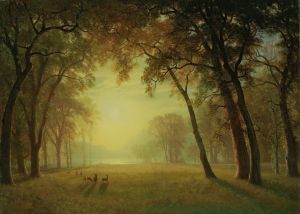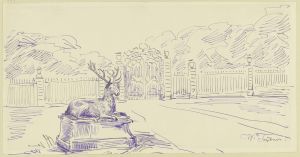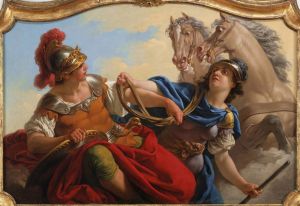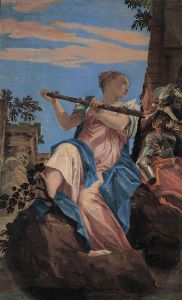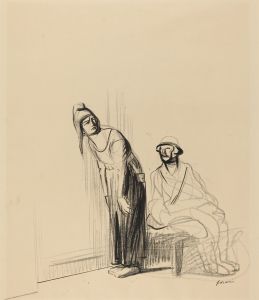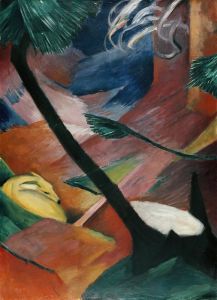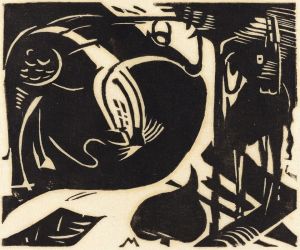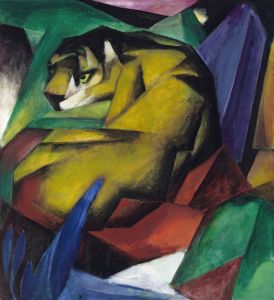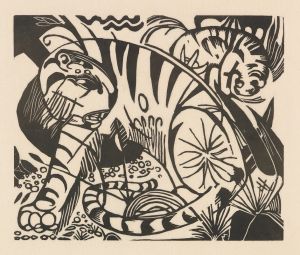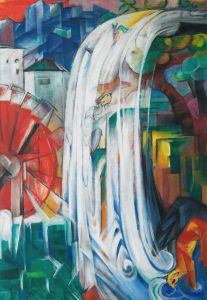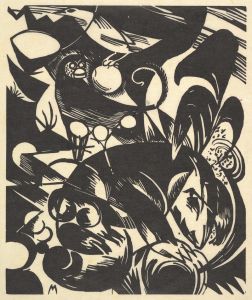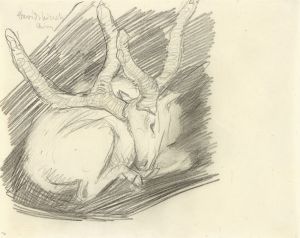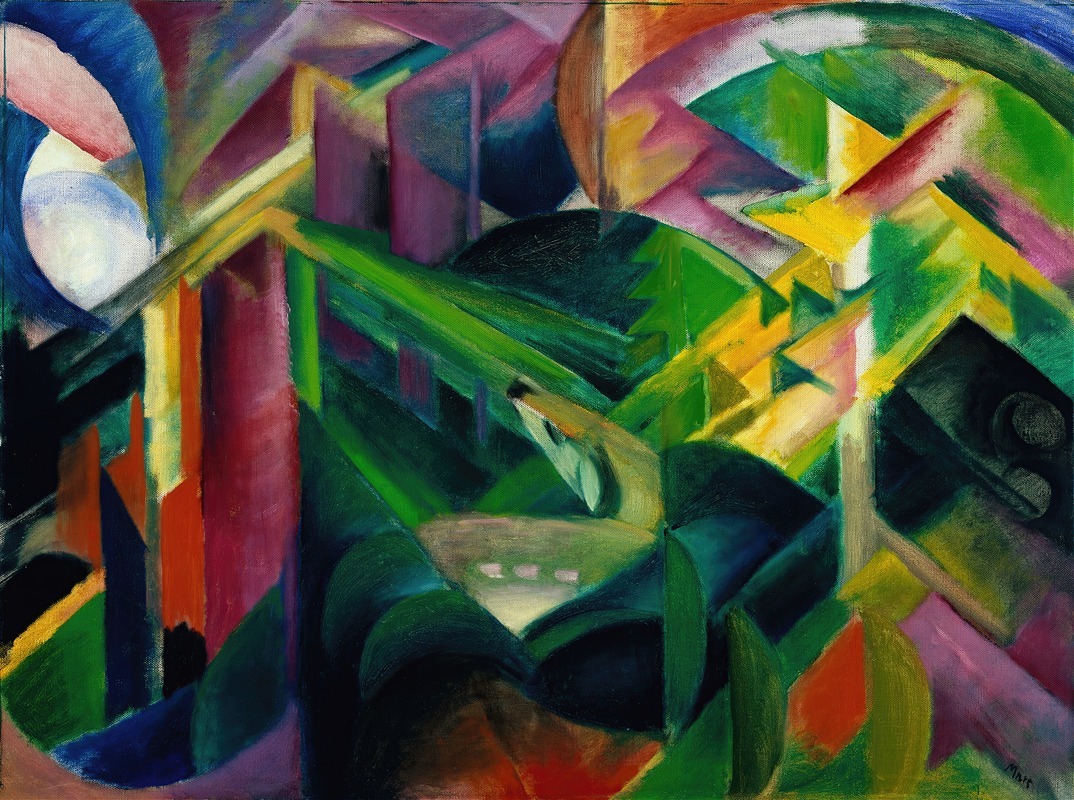
Deer in the monastery garden
A hand-painted replica of Franz Marc’s masterpiece Deer in the monastery garden, meticulously crafted by professional artists to capture the true essence of the original. Each piece is created with museum-quality canvas and rare mineral pigments, carefully painted by experienced artists with delicate brushstrokes and rich, layered colors to perfectly recreate the texture of the original artwork. Unlike machine-printed reproductions, this hand-painted version brings the painting to life, infused with the artist’s emotions and skill in every stroke. Whether for personal collection or home decoration, it instantly elevates the artistic atmosphere of any space.
Franz Marc was a German painter and printmaker, one of the key figures of the German Expressionist movement. He was a founding member of Der Blaue Reiter (The Blue Rider), a group of artists united in rejection of the prevailing academic standards in art. Marc is best known for his depictions of animals, which he saw as innocent and spiritual, often using bold colors and abstract forms to convey emotional and symbolic meanings.
"Deer in the Monastery Garden" is one of Marc's works that exemplifies his fascination with animals and nature. Painted in 1912, this piece reflects Marc's unique style and his philosophical approach to art. The painting features deer, which were a recurring subject in Marc's work, set in a serene and contemplative garden environment. The choice of a monastery garden as the setting adds a layer of tranquility and spirituality, aligning with Marc's belief in the purity and innocence of animals.
Marc's use of color in "Deer in the Monastery Garden" is particularly noteworthy. He often employed a vibrant palette to express emotions and ideas, and this painting is no exception. The colors are not necessarily realistic but are chosen for their symbolic value and emotional impact. Marc believed that colors could convey the inner essence of the subjects he painted, and he used them to create a sense of harmony and balance within the composition.
The composition of the painting is characterized by fluid lines and dynamic forms, which are typical of Marc's style. He often used simplified shapes and bold outlines to emphasize the spiritual and emotional qualities of his subjects. In "Deer in the Monastery Garden," the forms of the deer and the surrounding garden elements are stylized, creating a sense of movement and vitality. This approach reflects Marc's interest in capturing the essence of his subjects rather than their literal appearance.
Franz Marc's work, including "Deer in the Monastery Garden," was influenced by various artistic movements and ideas. He was inspired by the Fauvism movement, particularly the use of color by artists like Henri Matisse. Additionally, Marc was influenced by the Symbolist movement, which sought to express the spiritual and emotional aspects of human experience through art. These influences are evident in his use of color, form, and composition.
Marc's artistic career was tragically cut short by his death in World War I in 1916. Despite his relatively short career, his work has had a lasting impact on modern art. His innovative use of color and form, as well as his philosophical approach to depicting animals, have made him a significant figure in the history of art. "Deer in the Monastery Garden" remains an important example of his contribution to the Expressionist movement and his enduring legacy as an artist.





